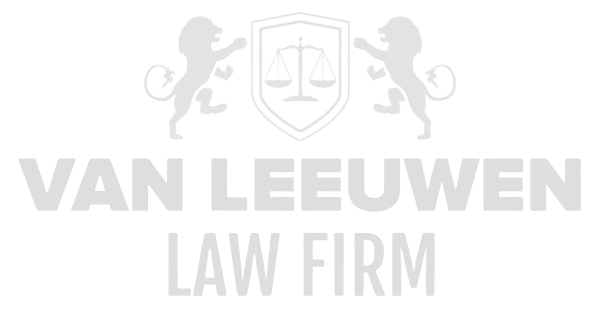The rapid rise of artificial intelligence (AI) across various sectors presents both unprecedented opportunities and complex legal challenges. Organizations developing or integrating AI applications must first clearly define how intellectual property rights are allocated concerning models, training data, and generated outputs. Without clear contractual agreements, uncertainty arises regarding ownership, licensing terms, and liability, which can lead to costly legal procedures and delays in project rollouts in case of disputes.
Additionally, responsible AI adoption requires organizations to implement extensive compliance frameworks. This includes policies for data collection, monitoring for algorithmic bias, and mechanisms for human intervention in automated decision-making. As EU authorities finalize the AI Act, companies must proactively establish governance roadmaps that identify high-risk AI systems, plan certification processes, and ensure continuous model testing.
AI Contracts and Intellectual Property
When drafting contracts for the delivery or development of AI models, a detailed inventory of all involved IP rights is crucial. Legal teams define in licensing agreements who retains ownership of the underlying algorithmic core, which rights apply to source code, and what restrictions are placed on the reuse of models in future projects. This prevents uncertainties regarding the right to copy, modify, or resell models.
Equally important is defining agreements concerning the output generated by AI, such as automatically generated texts, images, or recommendation data. Contract clauses specify whether this output automatically becomes the property of the client and under which conditions new licenses can be granted to third parties. Liability limitations account for scenarios where output turns out to be legally problematic—such as infringements of third-party rights or unwanted personal profiling.
Additionally, transparency clauses are embedded that require suppliers to provide documentation on model architectures, training datasets, and performance tests. These clauses serve as legal safeguards for responsible AI practices, enabling clients to gain insight into potential biases, data origins, and technical limitations of the provided AI solutions.
Governance and AI Policy
Organizations should develop a formal AI policy that spans from data collection guidelines to procedural rules for human intervention. Policy documents include criteria for selecting datasets—such as privacy and ethical standards—and frameworks for continuously monitoring model behavior for unwanted biases or performance shifts. Governance committees oversee compliance and advise on strategic AI decisions.
A key component of AI governance is implementing bias detection and fairness monitoring throughout the model lifecycle. Technical teams regularly audit training and test data to identify and correct deviations in model outputs. Legal and ethical experts validate that these procedures comply with anti-discrimination laws and human rights obligations.
Furthermore, a “human-in-the-loop” requirement guarantees that automated decisions can always be reviewed by qualified personnel before being operationally applied. This prevents unintended harm from AI decisions and allows involved parties to challenge overly autonomous systems. Procedural guidelines specify how and when human intervention must occur.
AI Impact Assessments
For high-risk AI applications, such as facial recognition or predictive recidivism algorithms, performing AI Impact Assessments (AIIAs) is indispensable. These assessments include a thorough analysis of potential discrimination, privacy, and security risks. Teams identify affected rights of individuals, evaluate the likelihood of adverse outcomes, and design mitigating measures, which are legally documented in an impact report.
AIIAs are conducted by multidisciplinary teams of data scientists, legal experts, and ethicists. The impact analysis includes workflows for scenario analysis—such as which populations may be disproportionately harmed—and validates that proposed technical controls, such as adversarial training or differential privacy, effectively mitigate identified risks.
Upon completion, AIIA reports serve as input for management decisions about go/no-go. Regulators may request these reports, especially in the application of EU-structured risk classifications under the AI Act. Legal teams ensure that reports comply with format requirements and include responsible contact persons and review timelines.
EU-AI Regulation and Future-Proof Roadmaps
With the upcoming EU-AI regulation, organizations must categorize high-risk AI systems according to the proposed risk matrix. Compliance roadmaps plan the implementation of certifications, oversight protocols, and mandatory registrations in the European AI registry. Legal teams track compliance deadlines and integrate these requirements into project schedules.
Strategic roadmaps also include an iterative process for periodic reviews of high-risk AI, where changes in legal definitions or technological shifts are translated into adjusted compliance procedures. This ensures that the organization does not fall short when the AI Act comes into effect and that existing systems are recalibrated in time.
Finally, roadmaps integrate transversal training programs for all employees, ensuring that awareness of AI requirements, ethical standards, and supervisory incidents is continuously maintained. By structurally embedding AI governance, a nimble organization emerges that balances innovation with legal compliance.
Supplier Management and Contractual Obligations
Contracts with AI suppliers should include explicit obligations for continued bias audits, with external auditors or independent committees periodically testing models for unwanted biases. Suppliers must provide explainability reports that clarify the interpretation of model outputs and the features used, as part of transparency obligations.
Additionally, contracts should specify model validation and retraining procedures: when performance indicators—such as F1 score or AUC—fall below certain thresholds, a validation phase or retraining must be automatically initiated. These technical triggers are legally defined to hold accountable parties when agreed quality standards are not met.
Finally, AI supplier agreements include clauses on continuity and exit management, ensuring that upon termination of the partnership, both the source code and documentation of model architectures and training data are securely transferred. This prevents vendor lock-in and ensures legal and technical safeguards during transitions to new AI partners.














